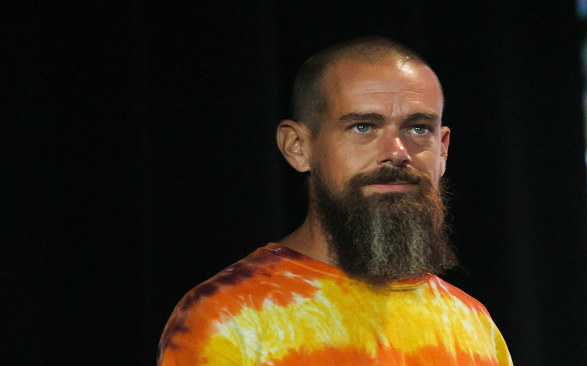Introduction
Jack Dorsey, Twitter Founder, resigned as CEO recently. It is quite unusual that Jack Dorsey is not only exiting as CEO but he will not also be the chairman of the Board. He is handing over to Twitter Chief Technology Officer (CTO) Parag Agrawal. Bret Taylor, who is Salesforce’s president, became Chair of the Board.
In this piece, I will briefly identify 8 things a founder-CEO must do when considering stepping down as a CEO of his or her company or startup.
First, reproduced below is Dorsey’s resignation letter:
Hello team.
After almost 16 years of having a role at our company…..from co-founder to CEO to Chair to Exec Chair to interim-CEO to CEO…I decided it’s finally time for me to leave. Why?
There’s a lot of talk about the importance of a company being ‘founder-led.’ Ultimately I believe that’s severely limiting and a single point of failure. I’ve worked hard to ensure this company can break away from its founding and founders. There are 3 reasons I believe now is the right time.
The first is Parag becoming our CEO. The board ran a rigorous process considering all options and unanimously appointed Parag. He’s been my choice for some time given how deeply he understands the company and its needs. Parag has been behind every critical decision that helped turn this company around. He’s curious, probing, rational, creative, demanding, self-aware, and humble. He leads with heart and soul, and is someone I learn from daily. My trust in him as our CEO is bone-deep.
The second is Bret Taylor agreeing to become our board chair, I asked Bret to join our board when I became CEO, and he’s been excellent in every way. He understands entrepreneurship, taking risks, companies at massive scale, technology, product, and he’s an engineer. All of the things the board and the company deserve right now. Having Bret in this leadership role gives me a lot of confidence in the strength of our board going forward. You have no idea how happy this makes me!
The third is all of you. We have a lot of ambition and potential on this team. Consider this: Parag started here as an engineer who cared deeply about our work and now he’s our CEO (I also had a similar path…he did it better!). This alone makes me proud. I know that Parag will be able to channel this energy best because he’s lived it and knows what it takes. All of you have the potential to change the course of this company for the better. I believe this with all my heart!
Parag is CEO starting today. I’m going to serve on the board through my term (May-ish) to help Parag and Bret with the transition. And after that…I’ll leave the board. Why not stay or become chair? I believe it’s really important to give Parag the space he needs to lead. And back to my previous point, I believe it’s critical a company can stand on its own, free of its founder’s influence or direction.
I want you all to know that this was my decision and I own it. It was a tough one for me, of course. I love this service and company…and all of you so much. I’m really sad……yet really happy. There aren’t many companies that get to this level. And there aren’t many founders that choose their company over their own ego. I know we’ll prove this was the right move.
We’ll have an all-hands meeting tomorrow at 9:05 AM Pacific to discuss it all. Until then, thank you all for the trust you’ve placed in me, and for the openness to build that trust in Parag and yourselves. I love you all.
Quick Tips
- Don’t limit the potentials of the company to the limited knowledge and imaginations of the founder permanently: At some point in the life of a company, a founder remaining permanent CEO of the company he or she founded may be “severely limiting” the potentials of the company and become a “single point of failure” for that company. So a founder-CEO must learn to know when it is the right time for his or her company to break way from the founder.
- Before handing over as CEO, a founder must ensure that he or she has trained, built, or mentored a capable mind and hand: As a founder-CEO, you can’t risk the safety and health of the company you founded and led if you don’t have a capable person to hand over to. This is why one of your jobs as CEO is not only to manage the company, but also includes building the next CEO and other critical leaders. If you haven’t been doing this while serving as CEO, the greater height you are taking your company may result in the deadliest crash when it begins to nosedive in the hands of an incapable pilot of the company when you are no longer CEO. Scary? Yes, that should scare you, and hopefully, it should scare you enough to start building the next CEO. How do you do that? Make a choice, quietly and secretly, about who the next CEO will be. He or she must be someone who deeply understands the company and its needs. Preferably, he or she should be someone who has been part of the critical decision-making processes of the company. And according to Jack Dorsey, he or she should be “curious, probing, rational, creative, demanding, self-aware, and humble …. and lead “with heart and soul”. For Dorsey, Parag is that man.
- Get a capable person whom you are confident about to chair the Board: Whether you like it or not, when a founder is no longer the CEO or no longer in charge, it is a risk to the company. While getting a capable person to become CEO largely derisks this, there will still be significant risks the company will have to contend with if you fail to introduce checks and balances. Yes, you need to have a corporate structure that helps the company ensure that you are not all on a plane with a single pilot that can’t be checked. Dorsey got Bret Taylor to chair the Twitter Board. It was only after Bret agreed to chair the Board that Jack Dorsey was confident enough that Twitter was going to be in the hands of persons who understand “entrepreneurship, taking risks”; persons who understand leading “companies at massive scale”; and persons who understand the “technology, product” that make Twitter tweet.
- Keep the closest eye on your engineers: In technology-enabled companies and technology-driven industries, engineers play a significant role. They can make or mar your product. Your engineers understand the technology that powers your product. And by implication, understand the product. While engineers may not have a sound understanding of the market and the company operations, their knowledge of the technology and the product is always compelling. This is why as a founder, you must keep the closest eye on your engineers. Dorsey knows this too. He was himself an engineer. He must have kept a close eye on Parag, the new CEO, who himself is an engineer. Perhaps not coincidentally, the Board chairman Bret Taylor is also an engineer who has come to understand so well the technology that makes Twitter tick.
- Before you hand over, build a team that can dream and drive: Having a great CEO with a great Board Chairman in the company will not help the company much if you don’t have a great team. As a founder-CEO, before you ever start thinking of handing over to the CTO, COO, CFO, CCO, or any of the “Cs” and “Os”, and what have you, ensure that you invest in team. Team makes the dream work. And beyond technical capacity, if you can build a team that has “a heart and a soul”, you will have the dream team that will be the winning team. This is every founder’s (or at least most founders’ dream). If leadership fails, or market fails, or even product fails, it is the dream team that will help you keep the dream alive or pivot to another, not mere salary earners. Dorsey acknowledged the importance of the team when he said that there is “a lot of ambition and potential on this team” and that everyone in the team has the “potential to change the course of this company for the better”. As a founder-CEO, how confident are you about your team today? Build the dream team.
- When you are preoccupied with other dreams, let the company go: Dorsey’s approach to leading Twitter has always been a peculiar one. After co-founding Twitter in 2006 and leading it briefly, Jack was pushed out. He eventually returned in 2011 as executive chairman, but when Twitter’s user base was anything but growing, Dorsey was named as CEO in 2015. Meanwhile, Dorsey was also the CEO of Square, a tech company he founded to provide solutions to businesses in the digital economy. His role at Square obviously forced Dorsey to run Twitter part-time. Investors never liked this. Consequently, Dorsey has been a hands-off Twitter CEO. He also became very interested in Africa, and dreams big about the continent. With Dorsey now fully for Square, the world should expect to see an even more ambitious and aggressive Square going forward, particularly with crypto innovations.
- Stick around for sometime: A company needs its founder. The founder is like the mother. However old the child-company becomes, the presence, nod, support, or reassurance of the mother can help the company find confidence, achieve growth, and find balance. This must be why Dorsey decided to join the Twitter Board. He will be a Board member in order to help the new CEO and the new Chairman with the transition. Dorsey will be sticking around but only for sometime. He wants to watch his creation grow beyond him.
- When the time is right, do what you need to do without thinking too much about what people will say: Since Dorsey resigned as Twitter CEO weeks ago, there have been speculations and rumors out there that Dorsey must have resigned due to the pressure by the Nigerian government who suspended Twitter indefinitely after the ENDSARS protest in October 2020. Dorsey, in his resignation letter, has not mentioned that Nigeria has any role to play in his decision to resign from Twitter. On the face of his resignation letter, this has absolutely nothing to do with Twitter or Dorsey’s role in the ENDSARS protest. It is (seemingly) a business decision by a CEO who wishes to see his company grow beyond him. If Jack Dorsey bothered himself about whether the time of resignation was right, he probably would still have remained Twitter CEO.
Dorsey believes that it is “critical a company can stand on its own, free of its founder’s influence or direction”. As a founder, before you leave your company to stand on its own and free itself of your influence, ensure that you have prepared your company for this change.
Discover more from Crypto Asset Buyer
Subscribe to get the latest posts sent to your email.




